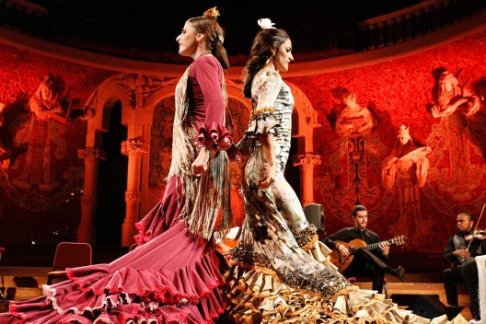Gratis
Apoyo

Sitios que se visitan:
Coliseo
Museos del Vaticano
Basílica de San Pedro (opcional)
Capitolio con vistas al Foro Romano
Panteó
Piazza Navona
Fontana di Trevi
Incluye:
Entrada Express al Colireo, los Museos del Vaticano y la Basílica de San Pedro
Transporte entre los diferentes sitios en taxi o autobús
Helado casero gratuito
Guías locales expertos
Excluye:
Propinas
Información importante:
Hay una nueva regla en el Coliseo, el Foro Romano y el Monte Palatino que sólo permite la entrada de mochilas pequeñas y bolsas de mano de tamaño regular en el interior. Los clientes con bolas más grandes o maletas no podrán entrar con estas y tampoco hay taquillas para guardarlo. Recuerde que todos los visitantes deberán pasar por un control de seguridad antes de entrar al Coliseo.
El Coliseo ha cambiado la política de admisión para garantizar un máximo de 3.000 personas en su interior, de manera que habrá menos multitudes durante las horas de máxima afluencia. A pesar de que las entradas exprés para ahorrarse colas son reservadas con antelación, puede haber un poco de retraso en la hora de entrada si el lugar ya ha alcanzado su capacidad máxima en ese momento.
Este tour combina dos opciones diferentes que tenemos: "Lo mejor de Roma – Coliseo y Lugares de Interés" junto a nuestro tour por la tarde llamado "Lugares de Interés del Vaticano – Museos y Capilla Sixtina del Vaticano". También incluye un helado casero y transporte en taxi o autobús desde el centro de la ciudad hasta el Vaticano. ¡Todo junto por un mejor precio que si lo compra por separado!
La Basílica de San Pedro y la Capilla Sixtina son lugares sagrados y, por tanto, la vestimenta debe ser apropiada para la visita. Se les pide a ambos hombres y mujeres que usen ropa que cubra al menos los hombros y las rodillas. Tours Guiados por el Vaticano no se hace responsable de la entrada negada pop una vestimenta impropia.
Su recorrido terminará en la Basílica de San Pedro, donde tendrá entrada exprés para ahorrarse colas, aunque no hay una explicación guiada por el interior de la iglesia.
Asegúrese de que todos los miembros de su grupo llevan una identificación válida el día de la visita. Importante en visitantes que cuentan como estudiantes, niños o jubilados.
TENGA EN CUENTA: todos los Museos del Vaticano están equipados con ascensores para el acceso en silla de ruedas, aunque no están convenientemente ubicados en el recorrido de las visitas guiadas y sólo permiten el acceso a lugares específicos de los museos.
Sac à bagages à roulettes pliable pour voyage d'affaires
River Thames Sightseeing Cruise As the River Thames snakes its way through London there is history at every bend. You can see and experience the River Thames Sights from the relaxed comfort of this hop on and hop off all day River Red Rover Cruise. You can hop on and off at Westminster Pier, Waterloo Pier, Tower Pier and Greenwich Pier.
Madame Tussauds kombiniert Glanz und Glamour mit erstaunlichen Locations auf der ganzen Welt. Hinter den Kulissen: Die Erstellung einer Wachsfigur beansprucht viel Zeit, Arbeit und Liebe fürs Detail. Bis zu einer fertigen Figur dauert es 3 Monate in einem langen Prozess von Fachleuten und professionellen Wachskünstlern.
KECHAODA K115 2G GSM Fonction Téléphone Double SIM 1,44 "32 Mo BT Dialer Caméra Arrière Lampe de Poche MP3 / MP4 / FM Mini Téléphones Mobiles pour Enfants Seniors
Create a London sightseeing schedule to suit you! This Hop-On Hop-Off open top bus tour includes 91 stops across London that you can jump off at and explore the city. On-board commentary gives you a few details about the attractions you can pass on the route - these include Buckingham Palace, the Tower of London and St Paul's Cathedral!
